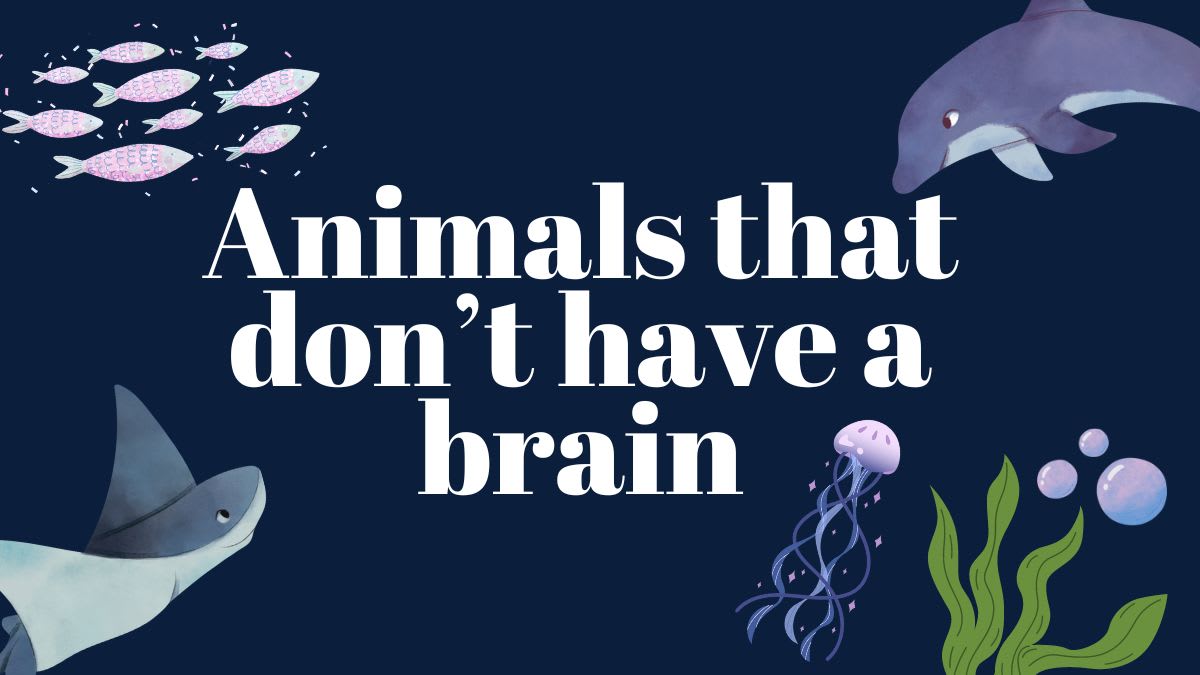Animals Without a Brain: Nature’s Surprising Survivors
It might be hard to imagine an animal living without a brain, but nature has produced some remarkable creatures that have found ways to survive and even thrive without one. While humans and many other animals rely on complex nervous systems, there are several species that have evolved unique adaptations to function effectively in their environments.
These animals challenge our understanding of what it means to be an intelligent or responsive creature. Instead of a centralized brain, they use simpler systems to carry out essential functions such as movement, feeding, and responding to stimuli. Let’s explore some of the most fascinating examples of life without a brain.
1. Jellyfish
Jellyfish are among the most well-known animals that lack a brain. Rather than having a central nervous system, they possess a nerve net—a decentralized network of nerves that allows them to sense and react to their surroundings. This system enables them to detect changes in light, temperature, and touch, which helps them swim, hunt for food, and avoid danger.
Some jellyfish species have existed for over 500 million years, making them one of the oldest groups of animals on Earth. Their survival is a testament to how effective these simple systems can be in the right environment.
2. Sea Sponge
Sea sponges are another example of creatures that don’t have a brain, heart, or even a nervous system. They live in marine environments and rely on water flow to bring in nutrients and remove waste. Sponges filter water through their porous bodies, capturing microscopic particles like plankton.
Despite their seemingly simple structure, sea sponges are complex organisms that have been around for more than 600 million years. They may look like plants, but they are fully functional animals that play a crucial role in ocean ecosystems.
3. Corals
Corals often appear as colorful rock-like structures, but they are actually colonies of tiny animals known as polyps. These polyps form large reef systems that support a vast array of marine life. Corals do not have a brain or a true nervous system, but they have simple nerve cells that help them respond to environmental changes.
Many corals also form a symbiotic relationship with algae, which provide them with energy through photosynthesis. This partnership allows corals to grow and flourish in nutrient-poor waters.
4. Sea Star (Starfish)
Sea stars, or starfish, do not have a brain, but they do have a nerve ring that controls their movements. This ring connects to their arms, enabling them to move and capture food. Sea stars are also capable of regenerating lost limbs, a feature that enhances their chances of survival.
They are able to hunt for prey, eat, and react to their surroundings without the need for a centralized brain. Their ability to adapt and function without a traditional nervous system is truly remarkable.
5. Portuguese Man O’ War
The Portuguese Man O’ War is often mistaken for a jellyfish, but it is actually a colony of specialized organisms working together. Each part of the colony has a specific function, such as capturing prey or defending the group. This organism does not have a brain, but its various components coordinate to perform all necessary survival tasks.
With long, stinging tentacles, the Portuguese Man O’ War is a formidable predator in the ocean, proving that cooperation can replace the need for a central nervous system.
These animals demonstrate that intelligence and survival do not always require a brain. Instead, they show that nature can find alternative solutions to the challenges of life, offering valuable insights into the diversity of life on Earth.







